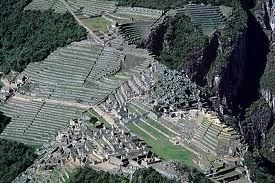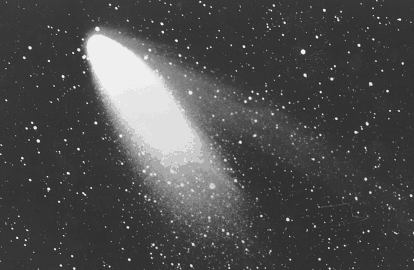(10 pm. – promoted by ek hornbeck)
Atomic Rooster was in interesting band. They were certainly British, and very eclectic. There are also connexions with other bands (some of which I have covered here) and with other, less well known ones.
This band came to be in much part between the collaboration betwixt the folks producing The Crazy World of Arthur Brown and several other bands, including The Who. Their connexions include King Crimson, Emerson, Lake, and Palmer, and a couple of other bands that I would rather folks mention in the comments. Shall we see more about them?
The backbone of the band was Vincent Crane, who was a master of the keyboard, especially his custom fitted Hammond organ that could do interesting sound effects. I am not certain how he made that to pass, but he did it well. He also used the foot pedals of the Hammond to simulate bass, much like Ray Manzarak did with The Doors for most of their career.
Crane, his real name being Vincent Rodney Cheesman, was borne an Englishman on the vernal equinox in 1943 in Berkshire, England. Now think back to then. England was under full bombardment by the Germans at the time, during World War II, although Berkshire was not always the prime target. He must have heard some volleys during his infancy, though.
He was the secondary driving force on The Crazy World of Arthur Brown, and either wrote or co-wrote most of those tunes. I posted a piece about that band several weeks ago. However, Vincent was his own worst enemy, as I am. He suffered from what we now call bipolar disorder, and it finally caused his death.
In any event, he got tired of touring with Brown and quit in mid tour. That was in late 1969, and Crane took Carl Palmer with him to form the nucleus of Atomic Rooster. Actually, they left on Friday the 13th, 1969. Go figure.
Not too long they picked up a bass player and singer (although Palmer could sing pretty well) named Nick Graham. Interestingly, their first moderate hit was called Friday the 13th. Let us enjoy some of it here.
I do not know about you, but I really enjoy Hammond organ. I should post about how they work someday, and they are completely different than most other organ type instruments.
After getting Palmer to join him, they did well — for a while. Crane was always marginal mentally, as is your host. However, they made some pretty good music for a while.
Crane, the undisputed leader of the band, decided that guitar was needed so he added John Du Cann. That aggravated Nick Graham, so he left. Such were the vagaries of bands in the late 1960s and early 1970s. This caused even more strife, and it led up to Carl Palmer leaving in the summer of 1970, to join with the obscure Keith Emerson and Greg Lake. They would finally be a mega band.
This actually was not unusual for British (and American) bands in that era. Many of the bands that we remember underwent significant personnel changes during their carerrs (notable exceptions being The Beatles, after Starr joined; The Who, until Moon died). But that left Crane sort of alone.
He sort of reached out for a while and finally got Paul Hammond to join the band. Hammond was a drummer, so the band were sort of depleted. They had an another record, Death Walks behind You, that was very strange. I have it on vinyl, and it is an error one since the front label is also on the reverse. I have only played it once, and it is its pristine jacket. By the way, it is on Atlantic Records.
Here is a bit from it.
After that, they sort of disintegrated. Crane became unstable again, and they did regroup later, but it was not the real Atomic Rooster. He tried his best to get the band together again, but their time had passed.
After several attempts, one excellent to regroup, it was all over. That attempt included David Gilmoure, from Pink Floyd.
What you do not know is that Crane was important for the rather obscure band, Dexys Midnight Runners, whose hit Come on Eileen, was excellent. Now some of you remember! I love that band! That was a wonderful song! I love the Celtic violin in it, and I usually HATE Celtic violin. But in this case, I make an exception. Although Crane had come and gone, his influence was there.
Let us listen to this wonderful song, Come on, Eileen!
Please note that a banjo is being played by one of the members. That is an African instrument, brought over by American slaves many centuries ago. It was, in its earlier form, a gourd with the skin of a cat over the gourd, stretched tight and dried, and the intestines of the same cat being the strings. We are more humane now, but I shall tell you this:
I have a very dear, older man, as a neighbor, who swears to me that he and his father would catch cats and dismember them for their very tough hide for the soundbox and their intestines for the strings. I believe him.
Now, to connect everything. Where to start?
Music is transcendental. I guess that is sort of a stupid thing to say. But I believe that it is a language apart from speaking, but just as filled with information, if not more so.
Vincent Crane died 19890214, on Saint Valentine’s Day. Look up and see the other dates of his life, and you will see that they sort of couple with the dates on the current calendar.
The others sort of dispersed, but without Crane, there was no Atomic Rooster. I have not bothered to see if the others are still living, and if in comments folks could let it be known, that would be good. Of course, Palmer is still with us.
How about a few more tunes from them for tonight?
This might be the best of all. Sometimes I think that I need some bromide to calm me down a bit, but I resist. Here are some of the connexions between Atomic Rooster and other, better known bands:
First, Crane himself played on The Crazy World of Arthur Brown, along with Palmer. This record was produced by Kit Lambert, with Peter Townshend as associated producer, as was recorded at Track Studios. Kit was the producer for The Who at the time, and of course Townshend was the driving force, and Track Studios was their own studio at the time.
Second, Carl Palmer left to become one-third of Emerson, Lake, and Palmer, a megaband what I have covered in this series before. They were really quite good. A secondary connexion is with King Crimson, with whom Greg Lake played in their early days.
Third, Crane himself played with Dexys Midnight Runners for a while, and they were fairly well accepted as sort of a cult band. That is why I included one of their tunes here. As a matter of fact, Come on Eileen reached number one both in the UK and in the US in 1982 and sold more copies than any other single (back when they still had singles) in the UK that year. However, Crane came to band very much later than that song was popular.
Interestingly, things have come full circle once again. With the advent of digital music, singles have made a comeback. When I was buying singles, they were vinyl discs with a big hole in the middle that were played by a diamond stylus at 45 rpm. Now they are digital files downloadable from the internet. Even more interestingly, when I used to buy them in the early 1970s, they cost about a dollar (but there was a “B” side, so you really got two songs), and the ones these days also cost about a dollar. Thus, accounting for inflation, the cost of a single has actually decreased over the year, not even mentioning all of the pirated ones that are currently traded.
I hope that everyone enjoys this very mysterious band’s music. I plan to post a science one Sunday on Pique the Geek, and I think that it will be another installment about misuse of scientific terms. I hope to see you there.
Warmest regards,
Doc
Crossposted at Docucharma.com and at Dailykos.com



Recent Comments